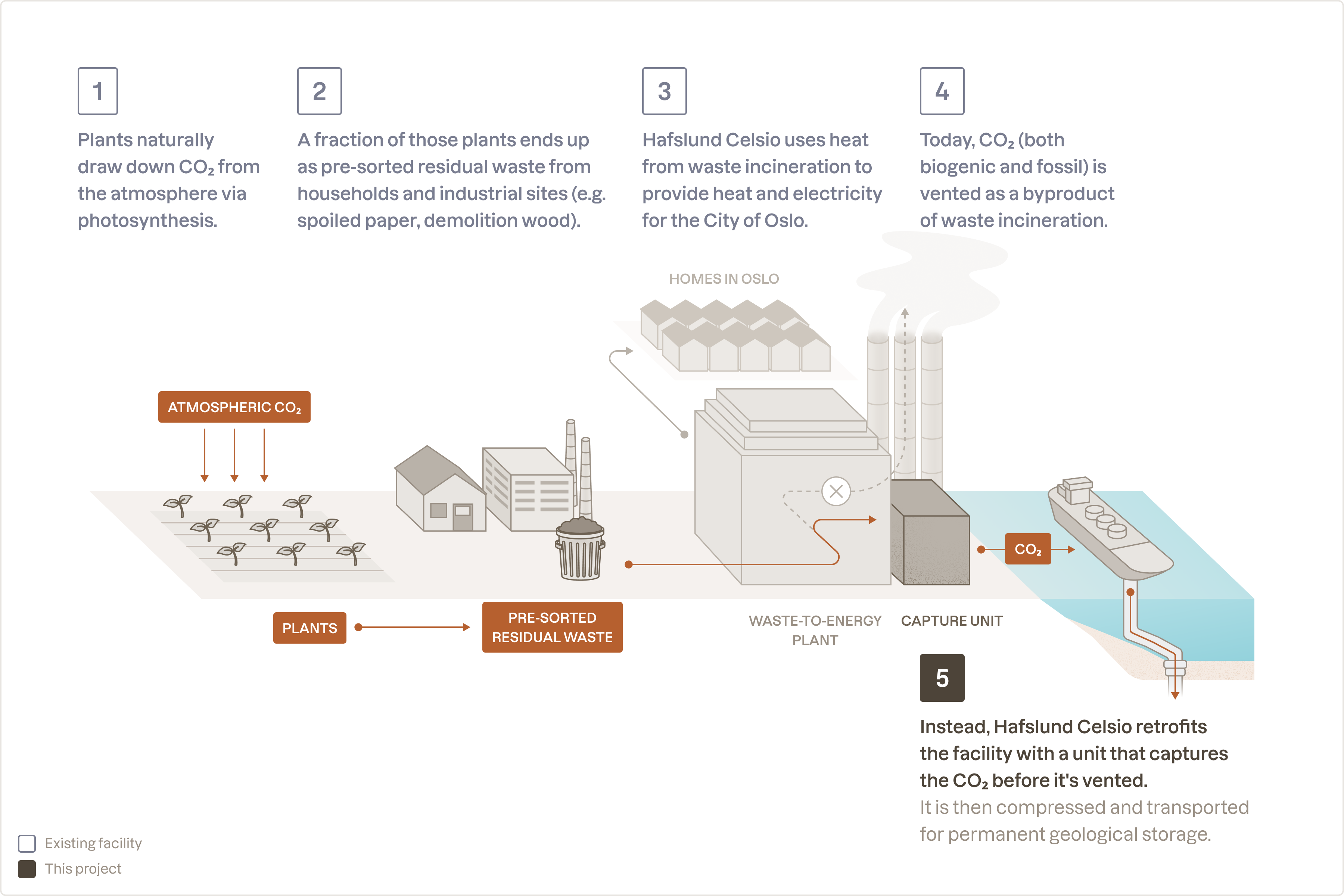Hafslund Celsio
Hafslund Celsio will retrofit a waste-to-energy facility with a carbon removal unit.
- Contracted tons
- 99,998
- Track
- Offtake - 2025
- Total contract value
- $31.7M
- Location
- Oslo, Norway
- Delivery timeline
- 2029 – 2030

The approach
Hafslund Celsio will retrofit its waste incineration facility with a carbon capture unit. The facility currently processes approximately 350,000 tons of waste each year. The incineration process generates two types of CO₂ emissions: biogenic emissions from organic materials, such as spoiled paper and cardboard, and fossil emissions from inorganic materials, like plastics.
Currently, both types of emissions are vented as a byproduct of the incineration process. The planned retrofit will include a CO₂ capture unit that captures both types of emissions before they are vented. The captured CO₂ will be liquefied and transported by ship to the Northern Lights facility for permanent geological storage.

The case for Hafslund Celsio
When done right, waste-to-energy is the best way to manage pre-sorted, residual waste with no other useful purpose. Waste in Norway is regulated according to the EU Waste Framework Directive, which means the residual waste entering this waste-to-energy facility has had recyclable material sorted out, and is the last fraction of waste that could not be prevented, reused, or recycled. This waste, such as spoiled paper and cardboard, generates methane if left untreated. Incinerating it for heat or electricity turns methane-emitting waste into a low-carbon source of heat and electricity. Hafslund Celsio employs state-of-the-art scrubbing equipment that allows it to operate in a dense urban environment with minimal impacts on air quality.
Adding a unit to capture CO₂ from these facilities has the potential to deliver 400 million tons of carbon removal per year by 2050, in addition to driving other decarbonization benefits. The potential for carbon removal from waste-to-energy retrofits stands at around 100 million tons of CO₂ today and could exceed 400 million tons by 2050. In addition to the tons of CO₂ removed from the atmosphere, these retrofits also result in an equivalent amount of avoided fossil CO₂ emissions. In other words, it’s a two-in-one solution for carbon removal and emissions reduction.
Because most of the infrastructure already exists, retrofits can deliver affordable tons at scale. European policies have led to increased deployment of waste-to-energy facilities over traditional landfills. In Europe alone, there are approximately 500 such facilities currently operating that could be retrofitted, enabling the removal of hundreds of millions of tons of CO₂. Instead of needing to build new infrastructure for carbon removal, retrofits make the most out of existing structures.
Pricing and delivery
The total offtake amount from Frontier buyers is $31.6 million for 100,000 tons. The price accounts for both the removal itself as well as measuring, reporting and verifying (MRV) that each ton is safely and permanently stored.
